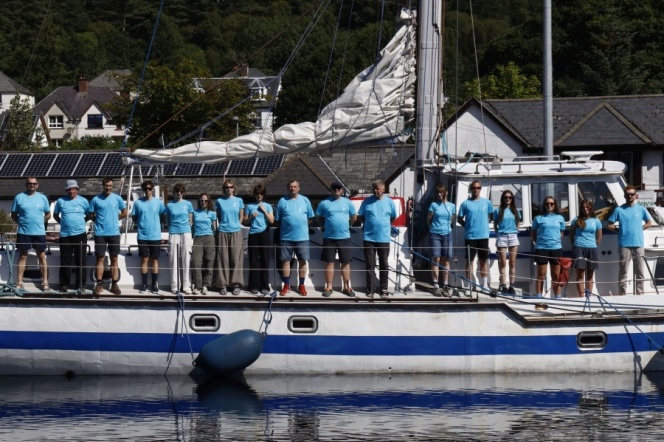Date added: 2025-11-20
Gdańsk University of Technology – inspired by the sea

The university’s close connection with the sea is reflected not only in maritime and shipbuilding study programs but also in a wide range of sailing activities. Under the “Maritime PG” initiative, Gdańsk University of Technology carries out projects in several key areas:
-
Information – providing students with guidance on connecting with experienced sailors and mentors,
-
Organization – giving students the chance to participate in teams that plan and run sailing activities,
-
Infrastructure – managing equipment storage and maintenance, revitalizing existing vessels and facilities, and expanding the available maritime resources,
-
Training – enabling students to develop and refine their sailing skills and knowledge, as well as gain qualifications to train others,
-
Sports – providing opportunities for those interested to compete in regattas.
As part of this program, a voyage around the waters surrounding the British Isles took place from July 5 to 19. The group included 12 students, five faculty members (including the captain and first mate), and the bosun, who set sail aboard the Gedania. This two-masted schooner measures just under 24 meters in length and has a sail area of 230 m². Applications for the voyage were open to all students, with selection based on academic performance in recent semesters and documented prior sailing experience. Each participant was a fully integrated member of the crew, taking on responsibilities such as navigational, anchor, port, and bosun watches, as well as cooking and maintenance duties.
Following the Titanic’s footsteps
The PG crew set off from Greenock near Glasgow, heading for Belfast in Northern Ireland. Their route took them through the North Channel, which connects the Irish Sea to the Atlantic Ocean. In Belfast, students and faculty visited the Titanic Museum located at the Harland & Wolff shipyard, where the famous White Star Line ships—the Olympic, Titanic, and Britannic—were built. The museum building itself is shaped to evoke the ships, and interactive exhibits illustrate the shipbuilding process from hull to steam engines to luxurious cabins.
Next, the crew sailed to the Scottish island of Staffa, famous for the basalt columns of Fingal’s Cave. The journey continued to the Isle of Skye, off Scotland’s Atlantic coast, and then to Oban and the near-deserted island of Kerrera.
Loch Ness and a mountain climb
The following day, the Gedania entered the Corpach lock, the gateway to the Caledonian Canal. This series of locks, known as Neptune’s Staircase, is a unique hydraulic engineering structure built between 1803 and 1822 by Thomas Telford. During the voyage, the vessel passed through a total of nine locks, rising about 20 meters. During a break, PG students climbed Ben Nevis, the highest mountain in the United Kingdom at 1,345 meters, raising the PG flag at the summit for a commemorative photo. The day ended in Fort Augustus, at the southwestern end of Loch Ness.
Navigating the relatively narrow loch under sail proved challenging, but the crew successfully reached Urquhart Castle, where the Gedania dropped anchor. The castle played a strategic role historically and was repeatedly attacked during Scottish clan conflicts.
The final stop of the voyage was Inverness, at the outlet of the Caledonian Canal, where the PG crew disembarked. The voyage was led by Prof. Wiesław Tarełko as captain, with Prof. Janusz Kozak as first mate. Professors Marek Dzida, the Rector’s Representative for Maritime Affairs, and Krzysztof Wilde, Rector of Gdańsk University of Technology, also participated as part of the reserve crew.
Hands-on learning and teamwork
During the voyage, students gained practical experience in sailing a large yacht, maneuvering in challenging weather, passing through canal locks, and planning and executing a long-distance voyage. They also had the chance to observe unique geological formations on Staffa, enjoy the landscapes of Skye, Loch Ness, and Ben Nevis, and strengthen teamwork skills while facing Scotland’s and Northern Ireland’s varied weather conditions.
Additionally, the voyage included a seminar on yacht design and operation, as well as workshops on upcoming student protolab projects and self-directed project zones. Students with higher sailing qualifications, under the supervision of the captain and officers, trained in command and maneuvering skills on the large yacht in real-world conditions.
-
2025-10-22
Life in Gdansk – History, Tips, and Fun



